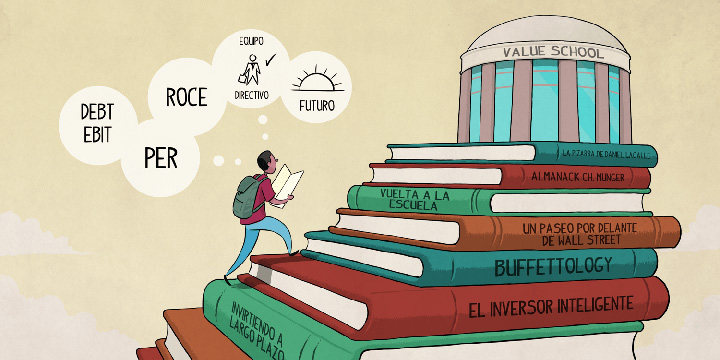I’m studying economics at Valencia University and I was lucky enough when I started my degree to meet other students who had the same interest in investment as me. There was one in particular who’d been investing for several years and who supported me in making my decision and clarified some of my queries.
My classmate used to invest in all kinds of assets, such as shares in listed companies, commodities, corporate debt, treasury bonds and even cryptocurrencies, so he had all the latest news and a lot of financial knowledge. So I took him as my mentor.
I began to pay attention to shares in listed companies, because they seemed the simplest to start out with, and then I realized that these were in fact the best assets to invest in. When I was 18 I made my first transaction and began to devise a strategy to find companies that fulfilled a series of requirements – they had to have fallen considerably in the last 12 months, have been given a 20% minimum potential by analysts, and other very rudimentary conditions.
Over time I learned more, made more transactions, gained more experience and I realized that my investment method was based on very few parameters that really gave me the assurance that my money was invested in a good company.
I carried on learning and discovered an investment style which – overlooking the obvious differences – was something like what I was already doing, although in a more technical and conscious way: value investment. I started to study the figure of Warren Buffet, whom I’d known since my early days to be one of the best investors in history – if not THE best – but I’d never taken the time to study his trajectory and what he based his investments on.
I did the same with Benjamin Graham and Peter Lynch, from whom I learned a lot, but my total immersion in the value philosophy came when I discovered García Paramés. I suppose it was because we were from the same country and belonged to the same culture, or maybe because of how simply he spoke when explaining his investment methodology. Whatever it was, he was the one who made me realize I was on the right track.
I learned a lot from reading his book, following his professional trajectory, the companies he invested in. What’s more, in July last year I was one of the privileged few to attend the Value School summer school, where I had the chance to hear him in person, as well as learning about other great managers investors who shared their knowledge with us.
That’s how I came to the conclusion that investing in value through shares in listed companies was the best destination for my savings, because it helps me maintain the purchasing power of money.
Using simple ratios that offer security
My investments have gradually evolved over time toward transactions that are more sophisticated, conscious and aware, and I hope they continue to develop favourably. Now I look at many more requirements before I invest, like the P/E, ROE, debt levels, future profits, the ownership of the company and the management team.
For example, the P/E, which has recently been criticized by many investors, has always given me confidence and assurance in my investments. When I look at this ratio, I compare the company’s current P/E with that of its sector, the market and the historic P/E.
The ROE measures profit based on the resources used, so this is a good parameter to know whether the company generates value. I assess the company’s debt levels via the DEBT/EBIT ratio. Another thing worth noting is what type of company it is, its sector and other aspects so you can take a higher or lower ratio as valid.
I also look at both its future investments to five years to see whether the company has the capacity to expand, and its future profits, because if you don’t take these future aspects into consideration, you could find yourself in a value trap.
I study the past record of the management team, and of the companies they headed in the past. And with regards to ownership, I like there to be a majority shareholder and if possible, for this to be a family. That way you guarantee that their priorities are aligned with those of the rest of the shareholders – in other words, you. Another similar signal that can inspire confidence is that the company is repurchasing its shares.
The are many other rations you can study, but there are so many that you have to use the ones you understand best, that are simplest to interpret, and of course the ones that give you most security. You can add value and assurance by studying the balance sheets, as you can find hidden assets, see their cash levels and many other aspects that give you more knowledge about the investment you’re going to make.
In the end, it’s like everything else: the more time you put into it and the more thoroughly you study your investments, the more likely you are to get good results.
Did you find this useful?
- |







